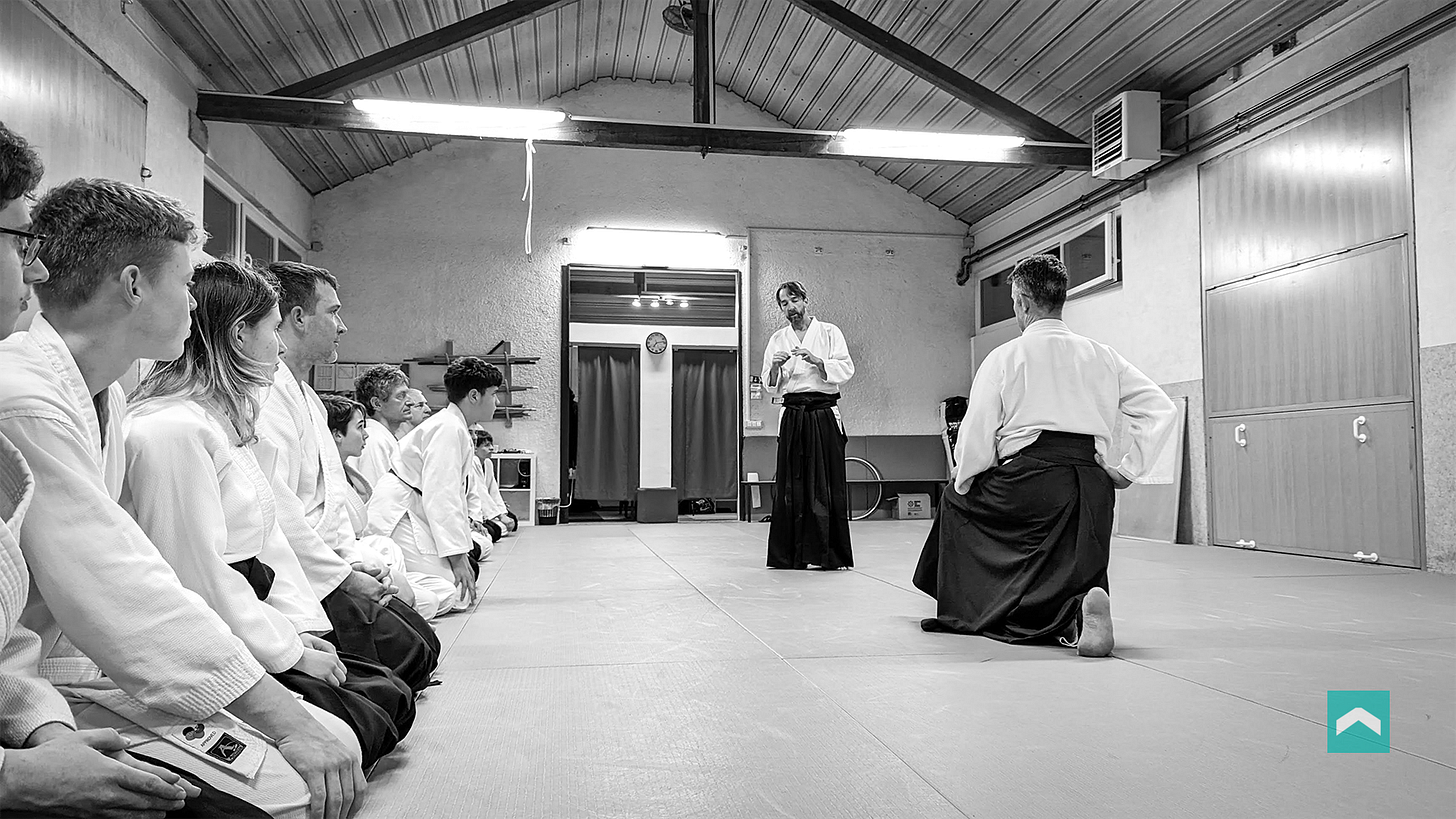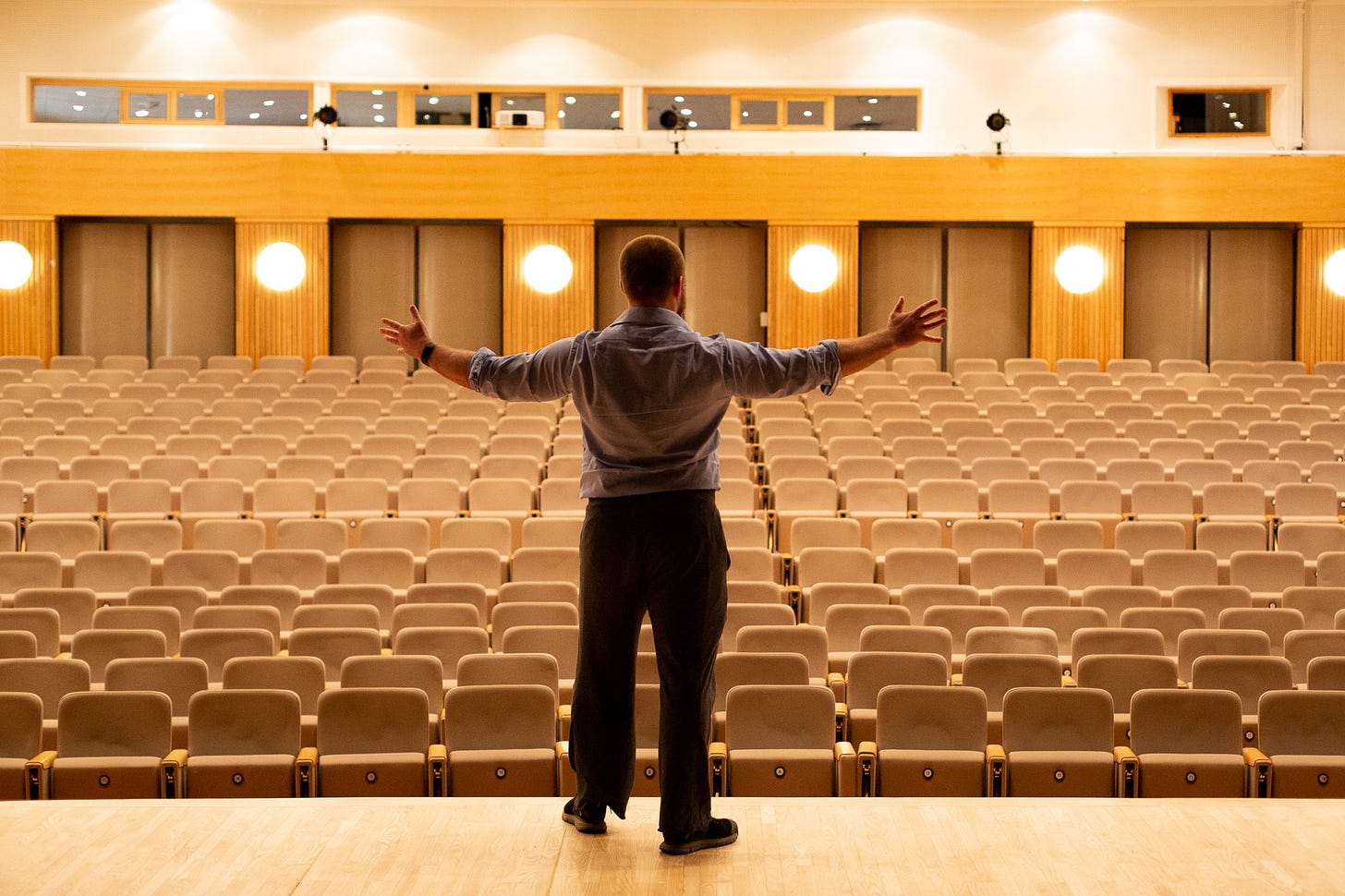Presence is the practice. Part 3: Redefining the Aikido teacher for life beyond the mat
What if the real gift we offer isn’t instruction but presence?
In Part 2, we explored centering as an invisible skill - one that shifts not just how we feel, but how others feel around us. In this third part, we turn to a deeper question: what does it mean to lead from that state? Less as an expert, more as an example. And how does that change the way Aikido is taught and received?
The shift from instructor to facilitator of presence
Traditional Aikido teaching often follows a familiar pattern: the instructor demonstrates a technique, offers corrections, and guides repetition. The knowledge flows one way - from expert to student. But when we leave the tatami and step into more complex human spaces, this model begins to crack.
Instruction alone doesn’t always help. People don’t just need to be shown what to do. They need to feel something stable in the room. A presence that allows their own system to reorganize. In those moments, the real impact of a teacher isn’t what they say, but how they are.
That’s the shift. From someone who teaches movement, to someone who holds space. From one who corrects form, to one who transmits state.
Practice becoming the facilitator, not the authority:
Before offering advice or correction, notice your breath. Are you genuinely grounded, or subtly defensive?
Ask yourself, “Can I model calm and curiosity instead of pushing for clarity?”
Lead with presence instead of instruction, enter a room quietly and observe how your state affects the group dynamic before speaking.
Real-world contexts: beyond martial, into relational, professional, civic roles
Aikido was never meant to be confined to martial scenarios. Most of our real-life challenges aren’t physical attacks. They are difficult conversations, strained relationships, workplace tension, and social fragmentation.
That’s where presence matters most. And that’s where the Aikido teacher can become something more.
Imagine carrying your centered awareness into a parent meeting. Into a conflict between colleagues. Into a hospital room, a town hall, or a classroom of anxious teenagers. Not to show techniques. Not to talk about Ki. But simply to be the most grounded person in the room and let others find their own breath because you’ve found yours.
This doesn’t require new credentials. It requires a shift in posture - from martial instructor to embodied citizen.
Letting go of the “expert” identity
In traditional dojos, authority is often built on rank, titles, and years of training. But the desire to be the expert can become a barrier. It creates a subtle pressure to always have the answer, to offer a correction, to lead the way.
That identity doesn’t transfer well into everyday life. People don’t want to be corrected, they want to be connected.
Letting go of the need to be the expert opens the door to something more authentic: being an example. You’re not the one who knows better. You’re the one who’s practicing - visibly, honestly, and consistently. That’s how influence begins. Not through hierarchy, but through congruence.
Practice humility without losing clarity:
Say “I’m practicing too” instead of “You should...”
Model curiosity by asking reflective questions instead of offering conclusions.
In moments of tension, regulate yourself first—your state teaches more than your words.
What changes when you lead through embodiment instead of instruction
Instruction is verbal. Embodiment is relational.
When you lead through embodiment, you don’t need to say much. Your breath says it. Your posture says it. Your choices say it. The coherence between your actions and your values does more than any explanation could.
This doesn’t mean you stop teaching. It means your teaching starts with who you are, not what you know. You become less of a performer, and more of a tuning fork—helping others regulate, orient, and adapt without needing to explain how.
It’s not about perfection. It’s about practicing presence in the moment, especially when it’s inconvenient.
Daily embodiment cues:
Ground before a meeting or conflict: feet flat, breath low, shoulders soft.
Practice speaking from center—slow down your tone and align your words with your body.
After any stressful exchange, ask: “Did my presence help de-escalate, or add tension?”
Implications for how Aikido spreads (less technique, more transmission)
This shift changes how Aikido moves through the world. Instead of requiring a dojo, a syllabus, or a uniform, it begins to show up in how people relate. In how they listen. In how they make decisions. In how they handle stress, conflict, and uncertainty.
We stop transmitting just technique, and begin transmitting a way of being.
That doesn’t mean we abandon form. It means the form serves the function of transmission, not the other way around. The practice is no longer limited to classes and seminars. It starts to live in relationships, communities, and public life.
Aikido spreads not because we push it, but because we live it, and people feel it.
Tie back to Walsh’s work and the vision for Applied Aikido
Mark Walsh has spent years bringing embodiment into spaces that don’t always welcome martial language—therapy rooms, corporate trainings, crisis zones. His approach doesn’t dilute Aikido. It distills its essence.
For Walsh, the heart of Aikido is state regulation, relational awareness, and embodied presence. You don’t need to throw someone to express those things. You just need to show up fully in the moments that matter.
That’s the promise of Applied Aikido, not a watered-down martial art, but a matured one. A practice that evolves with its practitioners and enters the world through who we become, not just what we perform.
In Part 4, we’ll follow the thread to its conclusion: if most people will never train Aikido, what are we really offering? This final part explores how to carry the art into everyday life—not through ideology, but through the way we show up.





This one lands deep. The idea that presence itself can be the teaching feels like the highest form of Aikido—no trophies, no hierarchy, just resonance.
Blessed be the teachers who transmit peace without a single word.
Thank you for expressing what I feel about how to translate Aikido beyond the bounds of the mat into the world of business and our communities 🙌